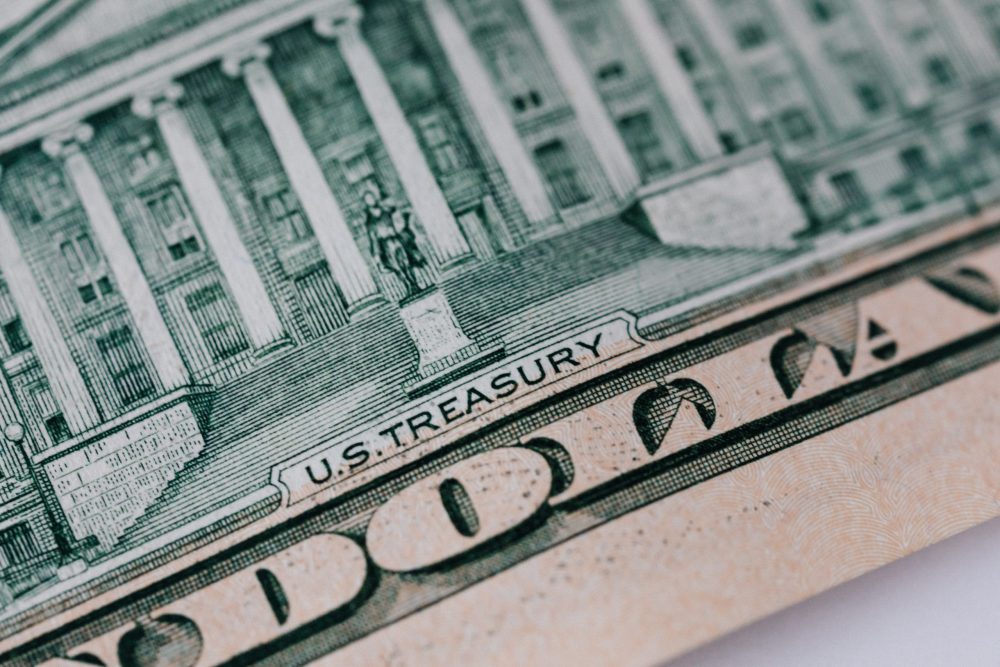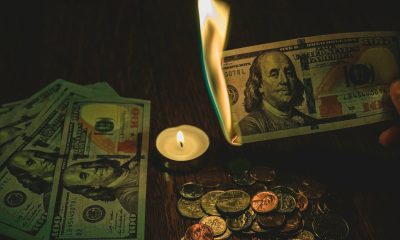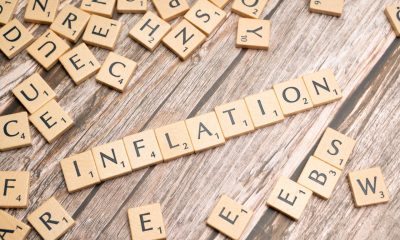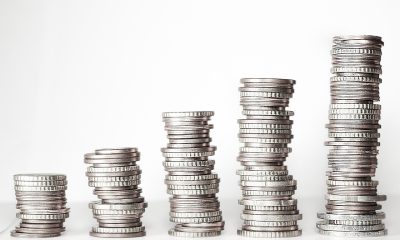Markets
What is Next for Treasury Yields
While we believe Treasury Yields are a no-touch right now, they should begin to see big inflows once the labor market begins to crack and the recession begins to manifest. We first need to see an uptick in initial unemployment claims above 275k and/or the Non-farm Payroll Report numbers to descend below 100k before duration Treasuries will become a buy.

The Fed’s minutes for their latest meeting held in July showed the committee’s interest in raising interest rates further due to upside risks to inflation that is already well above their target level. The Fed is also perpetually worried about growth, which of course has nothing to do with inflation. After all, people working and producing goods and services can never be at the root of inflation.
Nevertheless, the Atlanta Fed’s GDP Now model claims GDP growth in Q3 will be 5.8%! This, of course, is compelling the Fed to power on with rate hikes with the specious logic that the central bank must bring pain to the economy in order to quell inflation. There is just not any talk about money supply growth, which is the primary issue at hand when it comes to the dollar’s purchasing power getting destroyed. The Fed avoids this discussion because it would then lay the blame for inflation at the feet of those in charge of the printing press.
The market’s misperception of a stronger economy is just one of the reasons to be cautious about going out along the yield curve at this time.
Indeed, there are five other very good reasons to avoid owning long-term Treasury Yields right now:
- The Fed has not been a buyer of US debt. On the contrary, its Quantitative Tightening program entails it to be a big disgorger of Treasury Yields. Now that the Treasury General Account is being refilled, the supply of Treasury Yields that the market must absorb is increasing.
- Inflation rates have stopped falling. CPI fell from 9% in June of last year, to 3% in June of this year. However, that decline in the rate of change is over. In fact, CPI ticked higher in July.
- Japan is relaxing Yield Curve Control and that has caused JGB rates to jump. The Japanese are the largest buyers of US debt and the competition for Treasury Yields s is increasing.
- The PBOC may have to start selling Treasury Yields to support the value of the Chinese Yuan, which is down 14% against the USD since 2022, and is trading at a 15-year low.
- Finally, do not forget the skyrocketing US deficit, which is throwing a massive amount of bond supply on the market.
Contrary to Fed models, more evidence of the actual anemic state of the US economy can be found in the S&P Global PMI report. Business activity in the US private sector barely expanded in early August, with S&P Composite PMI falling to 50.4 from 52 in July. This reading came in worse than the market expectation of 52. Manufacturing PMI dropped to 47 from 49 in the same period while the Services PMI edged lower to 51 from 52.4.
Commenting on the survey’s findings, Chris Williamson, Chief Business Economist at S&P Global Market Intelligence had this to say, “A near-stalling of business activity in August raises doubts over the strength of US economic growth in the third quarter. The survey shows that the service sector-led acceleration of growth in the second quarter has faded, accompanied by a further fall in factory output.”
The US economy should stumble hard in Q4 of 2023, or by Q1 of next year at the latest. The reasons for this are clear:
- Student loan repayments resume in October. Moody’s estimates it will lead to a $75 billion hit to consumption per annum
- Household’s excess savings are projected to finally run out during Q4 of this year
- Monetary tightening works with about a one-year lag. The FFR was just 2.5% at this time last year. However, by the end of Q4 of this year, the debt-disabled US economy will begin to lap the 4.5% FFR, which was in effect at the end of last year. And it gets even worse throughout next year, as the current FFR is 5.25% and it could very well rise to 5.5% by November 2023
- The real, or inflation adjusted, Fed Funds rate, has soared from -8% in March of 2022, to 2% today. That is a massive rate of change drag on lending and provides great competition for the ownership of equities
- Those spiking nominal and real interest rates, along with the net percentage of banks tightening lending standards, which have soared from -32.4 in Q3 2021, to 50.8 in Q3 of this year, should begin to sharply curtail consumption
- Corporate defaults have surged 53% in just the first half of the year; as compared against the entire number of defaults throughout 2022
- Credit Card, auto, and personal loan defaults and delinquencies are rising sharply
- 401k hardship loans have spiked 36% this year
- Mortgage rates have recently hit a 23-year high and the home price-to-income ratio is very close to an all-time high as well. Therefore, housing affordability has plunged to nearly a four-decade low. It should be no surprise then that the economically crucial housing market is now freezing over; with total mortgage applications plunging 30% year over year
Therefore, while we believe Treasury Yields are a no-touch right now, they should begin to see big inflows once the labor market begins to crack and the recession begins to manifest. We first need to see an uptick in initial unemployment claims above 275k and/or the Non-farm Payroll Report numbers to descend below 100k before duration Treasuries will become a buy.
A recession will eliminate five of the six reasons to avoid duration bonds. Unfortunately, a contracting economy will also send deficits skyrocketing from their already disruptive amount of annual red ink. Therefore, whereas, labor market stress will provide a good timing signal to take on an allocation to the long end of the Treasury Yields curve, given our government’s proclivity towards helicopter money and inflation, the sojourn towards lower rates should (unfortunately) not last very long.
__
(Featured image by Karolina Grabowska via Pexels)
DISCLAIMER: This article was written by a third party contributor and does not reflect the opinion of Born2Invest, its management, staff or its associates. Please review our disclaimer for more information.
This article may include forward-looking statements. These forward-looking statements generally are identified by the words “believe,” “project,” “estimate,” “become,” “plan,” “will,” and similar expressions. These forward-looking statements involve known and unknown risks as well as uncertainties, including those discussed in the following cautionary statements and elsewhere in this article and on this site. Although the Company may believe that its expectations are based on reasonable assumptions, the actual results that the Company may achieve may differ materially from any forward-looking statements, which reflect the opinions of the management of the Company only as of the date hereof. Additionally, please make sure to read these important disclosures.

-

 Markets2 weeks ago
Markets2 weeks agoCocoa Prices Drop Amid Speculative Selling and West African Supply Concerns
-

 Business22 hours ago
Business22 hours agoThe TopRanked.io Weekly Digest: What’s Hot in Affiliate Marketing [PureVPN Affiliates Review]
-

 Cannabis1 week ago
Cannabis1 week agoIs Aurora Cannabis Stock a Risk Worth Taking?
-

 Fintech4 days ago
Fintech4 days agoRobinhood Expands to Europe with Tokenized Stocks and Perpetual Futures
























